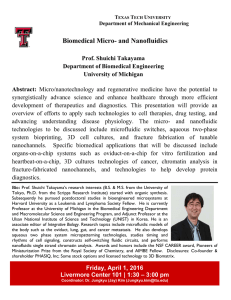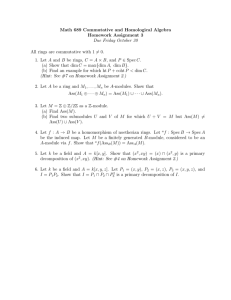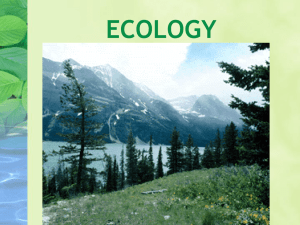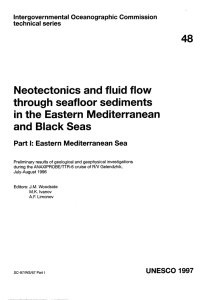to detect sm all-scale genetic variation. ... European C ontinental S helf (coasts of B ritain,...
advertisement
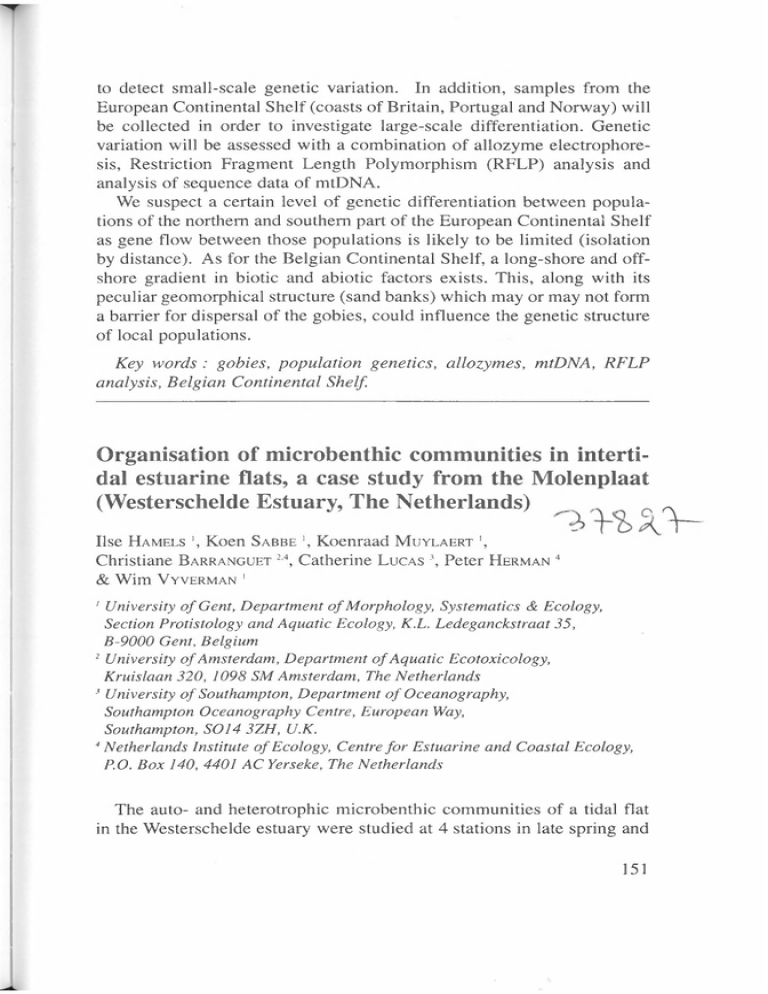
to detect sm all-scale genetic variation. In addition, sam ples from the European Continental Shelf (coasts of B ritain, Portugal and Norw ay) will be collected in order to investigate large-scale differentiation. Genetic variation will be assessed with a com bination o f allozym e electrophore­ sis, R estriction Fragm ent Length Polym orphism (RFLP) analysis and analysis of sequence data o f m tDNA. We suspect a certain level o f genetic differentiation betw een popula­ tions o f the northern and southern part o f the European Continental S helf as gene flow betw een those populations is likely to be lim ited (isolation by distance). As for the Belgian C ontinental Shelf, a long-shore and off­ shore gradient in biotic and abiotic factors exists. This, along with its peculiar geom orphical structure (sand banks) which m ay or may not form a barrier for dispersal o f the gobies, could influence the genetic structure of local populations. K ey w ords : g obies, p o p u la tio n g en etics, a llo zym es, m tD N A , R F L P analysis, B elg ia n C o n tin en ta l Shelf. Organisation of microbenthic communities in interti­ dal estuarine flats, a case study from the Molenplaat (Westerschelde Estuary, The Netherlands) _ c ^__ Ilse H a m e l s ', Koen S a b b e ', Koenraad M u y l a e r t ', Christiane B a r r a n g u e t 2-4, C atherine L u c a s \ Peter H e r m & W im V y v e r m a n 1 an 4 1 University o f Gent, Department o f Morphology, Systematics & Ecology, Section Protistology and Aquatic Ecology, K.L. Ledeganckstraat 35, B-9000 Gent, Belgium 2 University o f Amsterdam, Department o f Aquatic Ecotoxicology, Kruislaan 320, 1098 SM Amsterdam, The Netherlands 3 University o f Southampton, Department o f Oceanography, Southampton Oceanography Centre, European Way, Southampton, S O I4 3ZH, U.K. 4 Netherlands Institute o f Ecology, Centre fo r Estuarine and Coastal Ecology, P.O. Box 140, 4401 AC Yerseke, The Netherlands The auto- and heterotrophic m icrobenthic com m unities of a tidal flat in the W esterschelde estuary were studied at 4 stations in late spring and 151 early autum n 1996. A dditional inform ation on the diatom com ponent of these com m unities was obtained from a one-year survey of these orga­ nisms. Total autotrophic biom ass greatly exceeded heterotrophic biom ass in late spring, especially at the m ore silty stations. However, in autumn, the auto-/heterotrophic biom ass ratio was m uch lower and is < 1 in the most sandy station. Epipelic diatom s generally com prised the bulk o f prim ary producers, w hereas epipsam m ic diatom s and flagellates only significant­ ly contribute to autotrophic biom ass in the more sandy sediments. H eterotrophic biom ass was dom inated by flagellates and ciliates. Sandy sedim ents had the m ost diverse ciliate com m unities and the highest bio­ mass. The increase in ciliate biom ass and the greater im portance o f her­ bivorous versus bacterivorous ciliates from June to Septem ber m ight be attributed to selective grazing by m etazoa on the generally larger herbi­ vorous ciliates in June. Prelim inary estim ates indicate that apart from epi­ sodic bloom s o f herbivorous taxa, ciliate grazing does not seem to haye an im portant im pact on epipelic diatom populations. In general, silty sedim ents appear to be characterized by prom inent tem poral changes in m icrobenthic biom ass and com position, related to predictable seasonal changes in environm ental conditions as well as epi­ sodic and stochastic events resulting in severe disturbance and resuspen­ sion. Sandy sedim ents m ay have m ore com plex and resilient m icroben­ thic com m unities, adapted to a continuous regim e o f disturbance in the top layers o f sedim ents and with a less pronounced seasonality. Arthropod populations occurring on the banks of the tidal part of the river Scheldt : Q Qg0 distribution patterns and threats ^ \0<\o Frederik H e n d ric k x '-2, Jean-Pierre M a e lfa it 2 & R oald S te e n o 2 1 University o f Gent, D epartm ent o f Biology, Laboratory o f Ecology, Zoogeography and Nature Conservation, K.L. Ledeganckstraat 35, B-9000 Gent, Belgium 2 Institute o f Nature Conservation, Kliniekstraat 25, 1070 Brussels, Belgium In contrast to other biota o f the river Scheldt the terrestrial arthropod com m unities occurring on its banks were until recently very poorly 152


